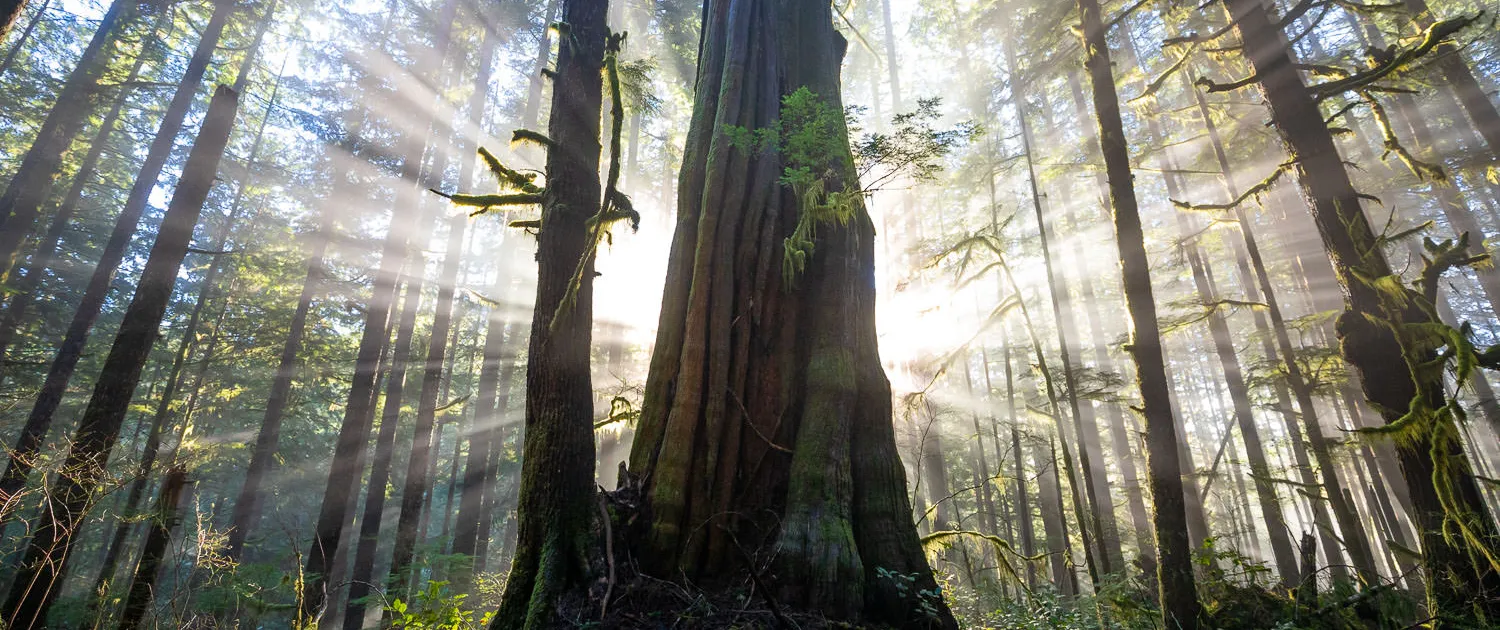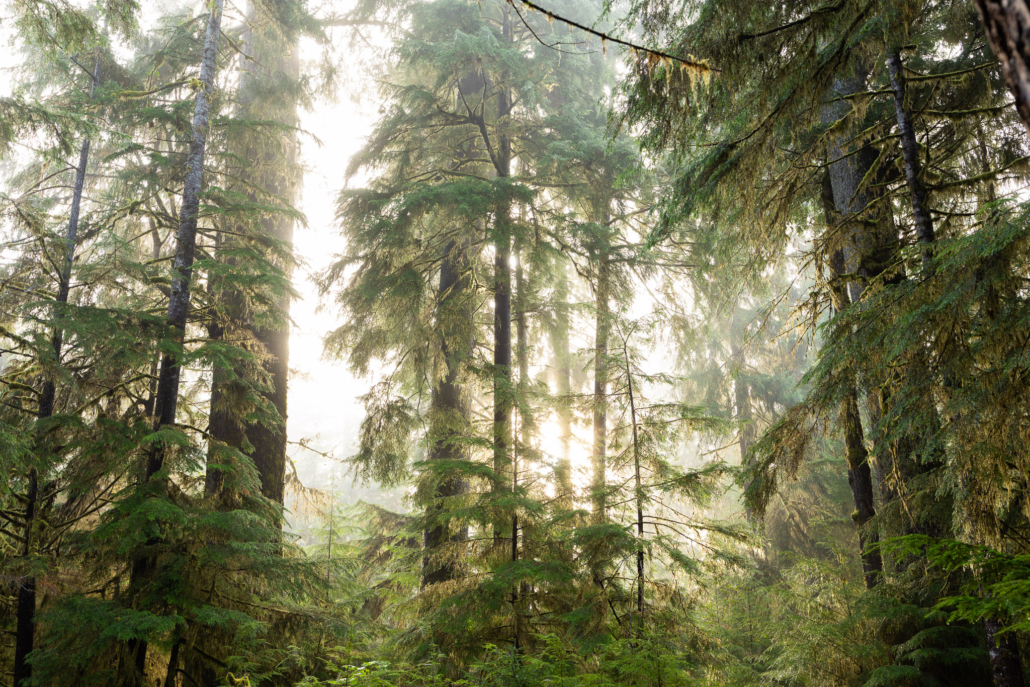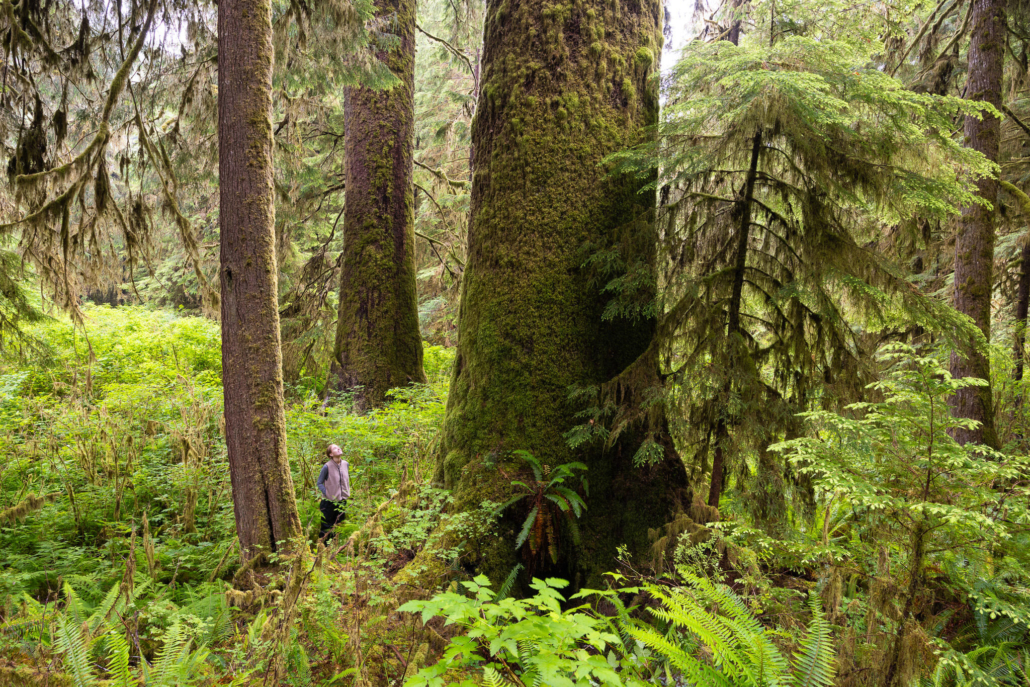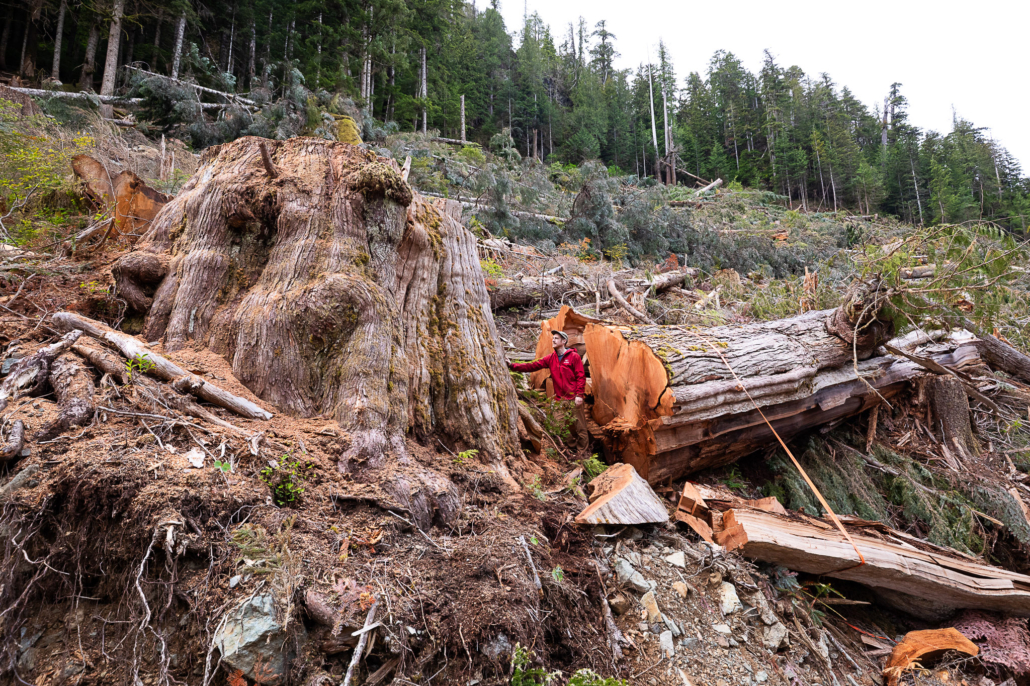 May 5 2017
May 5 20172017 Provincial Election Summary – BC Party Platforms on Old-Growth Forests and Related Forestry Issues
Old-Growth Logging
BC Liberal Party
The BC Liberals’ forestry platform is the unsustainable status quo: maintain business-as-usual logging practices (which includes clearcutting old-growth forests), market BC wood abroad, support BC construction projects that contain BC wood, and plant more trees. Their forestry platform makes no mention of protecting old-growth forests, outside the Great Bear Rainforest.
The BC Liberals significantly increased the rate of old-growth logging in BC’s interior during their time in power and have allowed Old-Growth Management Area boundaries in many parts of the province to be adjusted to allow for more logging. Using stumpage fees and taxpayers’ dollars, they have aggressively marketed BC old-growth wood abroad, particularly in China, and reduced old-growth forest retention targets in the Central Interior to prop-up ailing mills. They also deregulated vast areas of private, corporate forest lands that were once publicly regulated, opening up major tracts of protected old-growth forests for liquidation and allowing the rate of cut to skyrocket. The Liberals’ key areas of progress in reducing the rate of cut have been in the Great Bear Rainforest, where the AAC was reduced by 40%, and in Haida Gwaii, where the AAC was reduced by 50%.
BC NDP
The NDP’s forestry policy platform is similar to the BC Liberals’ status quo forestry platform: market BC wood abroad, support BC construction projects that contain BC wood, and plant more trees. They also make no mention of old-growth forest management in the forestry platform itself; however, their environment platform includes a somewhat vague but very important statement about using the ecosystem-based management approach of the Great Bear Rainforest as a model to sustainably manage BC’s old-growth.
The NDP had a poor track record when it came to curbing the total wood volume of destructive old-growth logging. Although they made a minor reduction in the Allowable Annual Cut (AAC) coming into power in 1991, and further minor reductions due to the addition of new parks and protected areas as land use plans were implemented, the NDP continued to allow overcutting in BC’s forests throughout the 1990s.
BC Green Party
The Green Party’s platform calls for inventorying and then protecting BC’s remaining old-growth forests, while improving the sustainable logging of second-growth stands instead. It also calls for application of the precautionary principle to timber supply reviews (which may refer to reducing the overcut) and the development of new forest practices regulations that address cumulative effects, wildlife, and First Nations interests.
Old-Growth Protection – Parks and Conservancies
BC Liberal Party
In their 16 years of power, the BC Liberals increased the province’s legislated protected areas by 3% (from 12% to 15%) – almost all within the Great Bear Rainforest, Haida Gwaii, and Squamish Nation lands in response to First Nations land use plans and environmental markets pressure. They halted the creation of new protected areas on Crown lands across most of the rest of the province, with a few minor exceptions (the Slim Creek Provincial Park near Prince George, for example).
BC NDP
During their 10 years in power, the NDP increased the amount of protected areas in the province by 6% (from 6% to 12%) and did so systematically across most of the province, including in many old-growth forests. They had a substantially better track record than the BC Liberals in this regard; however, they capped protection at 12% in most regions and across the province as a whole, letting the logging industry cut a vast number of contentious, high conservation value old-growth forests excluded from protection.
None of the major parties, including the Green Party, have made commitments to or set targets for the systematic creation of new, legislated protected areas across the province.
Old-Growth Protection – Forest Reserves
BC Liberal Party
The BC Liberals have generally dragged their heels in implementing the system of forest reserves first committed to by the NDP government of the 1990s as part of the “higher level” land use plans created in each region. This includes establishing Old-Growth Management Areas, Visual Quality Objectives for scenery, Ungulate Winter Ranges, and Wildlife Habitat Areas, such as for marbled murrelets, spotted owls, and northern goshawks. Not only has implementation been slow, allowing the logging industry to cut vast areas of old-growth forests over this time, but many forest reserves have been removed to accommodate logging interests – most recently on northern Vancouver Island in 2016. However, as an exception to their overall poor record on forest reserve establishment, the BC Liberals implemented the ground-breaking Great Bear Rainforest agreement, which protects most of that region’s old-growth forests in a combination of conservancies and forest reserves. This was done under threat of BC timber boycotts in Europe and due to the conservation interests of First Nations band councils.
BC NDP
The NDP implemented a system of forest reserves in the 1990s as part of the Biodiversity Guidelines of the Forest Practices Code. This was a significant step forward in forest conservation, although the government ensured their implementation had a limited impact on the timber supply available for logging. By the late 1990’s, the NDP was also watering down the forest reserve guidelines, removing the emphasis on connectivity and removing major old-growth protection reserves on southern Vancouver Island, known as Forest Ecosystem Networks.
In their 2017 environment platform, the NDP offers some hope: they refer to using the ecosystem-based management approach of the Great Bear Rainforest as a model in land-use planning and old-growth management. If interpreted as implementing the same model used in the Great Bear Rainforest in the rest of the province (it is a vague statement allowing for considerable wriggle room), it would establish an extensive system of forest reserves to protect and restore old-growth forests of all types across the province and greatly reduce the rate of overcutting – and in fact would likely end the logging of old-growth forests in many parts of BC, such as on Vancouver Island where old-growth forests are far more endangered than in the Great Bear Rainforest.
BC Green Party
The Greens’ platform includes protecting BC’s old-growth forests in reserves, as well as the implementation of a new BC Forest and Range Ecology Act that would emphasize wildlife habitat restoration and address First Nations rights, resilience planning and cumulative effects.
Raw Log Exports and Manufacturing
BC Liberal Party
The BC Liberals have dramatically increased the rate of raw log exports since coming to power, quadrupling average annual log exports to over 6 million cubic meters each year, resulting in the loss of thousands of potential forestry jobs in BC. They removed the local milling requirement, granted scores of log export permits from Crown lands, issued general exemptions against log export restrictions for the entire North Coast, and removed Tree Farm Licences on corporate private lands, opening the floodgates to log exports. They continue to justify log exports and propose no additional system of regulations or taxation to restrict them.
BC NDP
While the NDP began to increase log exports by the late 1990s towards the end of their term, export levels came nowhere near those seen under the BC Liberals today. The NDP has been highly vocal in their criticism of raw log exports and their potential impact on BC milling jobs, but are not proposing in their platform any increase in the log export tax or any regulations to restrict or ban log exports. Nor are they proposing any tax incentives or structural adjustments (such as creating regional log sorts) to support the value-added sector. Instead, they have stated an interest in creating more manufacturing jobs without stating concrete policies or mechanisms to facilitate this outcome.
BC Green Party
The Green Party’s platform includes a commitment to curb raw log exports but does not state how. They also propose tax relief (i.e. removing PST) on purchases of new manufacturing machinery to upgrade and build new sawmills and value-added facilities.

See the Parties’ 2017 Election Policy Platforms:
BC Liberal Platform
Forestry: pages 23-26
Environment (Great Bear Rainforest): pages 118-122
NDP Platform
Forestry: pages 82-84
Also see “Taking Action for BC Forestry Jobs”
Environment/Old-Growth/Great Bear Rainforest reference: page 61
Green Party Platform
Forestry: pages 53-55





